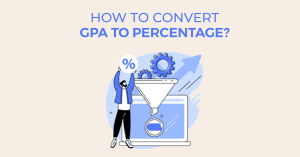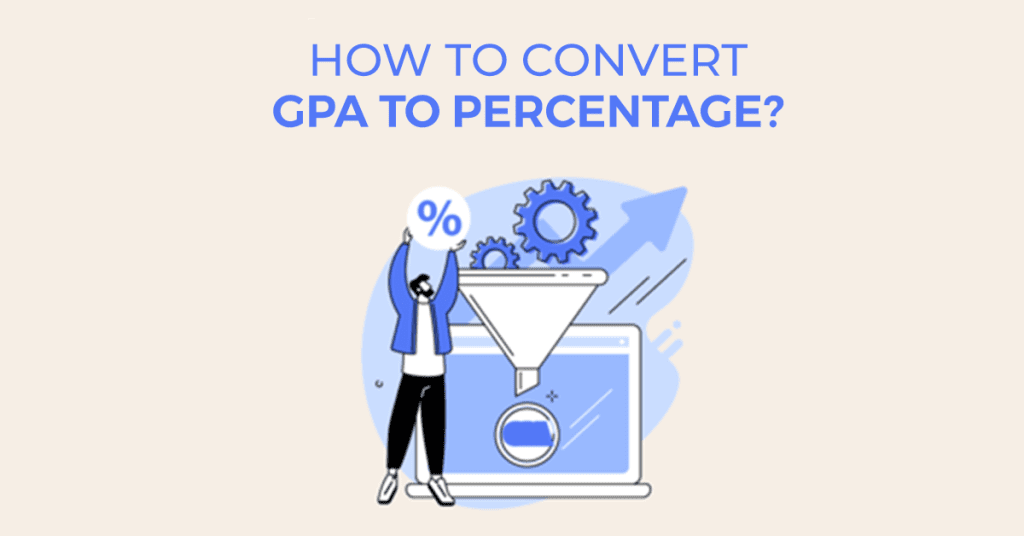Unlock Your Potential with the GPA to percent Converter
Intro: GPA to percent Converter
GPA to percent Converter: Achieving your academic goals can be a daunting task, but with the right tools at your disposal, you can make the journey a lot smoother.
A great instrument for this purpose is the GPA to percent Converter. This remarkable tool can help you understand where you stand in your educational journey and map out a plan for reaching your potential. So, let’s delve into what this converter is and how it can benefit you.

Understanding the GPA Scale
Embarking on a journey into the world of Grade Point Averages (GPA) requires us to first unravel the mystery behind the GPA scale. GPA, an acronym commonly heard in the corridors of U.S. educational institutions, is a yardstick used to gauge a student’s scholastic success.
Graded on a scale that typically ranges from 0 to 4.0 or 5.0, the GPA system is a universal language spoken in high schools, colleges, and universities across the nation. Essentially, the higher the GPA, the brighter the academic accolades.
But, what happens when we want to translate this academic language into the more familiar language of percentages? That’s when we turn to the GPA to percent Converter. But more on that later. For now, let’s focus on understanding the ins and outs of the GPA scale.
Also visit:-
The Need for a GPA to percent Converter
Diving into the ocean of GPA scales and percentages can seem daunting, and it’s not always smooth sailing, but luckily, the GPA to percent Converter is the compass you need to navigate these waters. While the GPA scale is a popular choice among U.S. institutions, it’s not a one-size-fits-all system. Many schools prefer using a percentage system or a completely different grading system.
For instance, if you’re an international student from a country that uses a different grading scale, it can be quite a conundrum to decode your GPA into a percentage.
But it’s not just about making sense of different grading systems. Sometimes, it’s about convenience and comprehension. Many of us find percentages easier to digest and a more relatable way to gauge academic progress. Simply put, percentages feel more tangible and real. They give us a clear picture – a percentage point increase or decrease is easier to track than a point shift on a GPA scale.
And this is precisely where the GPA to percent Converter steps in. This ingenious tool bridges the gap between GPA scales and percentages, transforming your GPA into a percentage to give you a better understanding of your academic standing.
It’s like having a translator that can effortlessly switch between the languages of GPA and percentages. So whether you’re a domestic student trying to get a better handle on your grades, or an international student grappling with a foreign grading system, the GPA to percent Converter is your key to unlocking a clearer picture of your academic performance.
How Does the GPA to percent Converter Work?
Let’s roll up our sleeves and take a deep dive into the workings of the GPA to percent Converter. Picture this remarkable tool as a math whiz who can decode the complex language of GPA into simple, relatable percentages. But how does it pull off this impressive feat? The answer lies in a clever mathematical formula.
This formula enables the converter to translate your GPA, whether it’s on a scale of 4.0 or 5.0, into a neat percentage. It’s like having a magical translator that effortlessly switches from the nuanced language of GPA to the universal language of percentages, giving you a clear-cut idea of where you stand academically.
One key thing to remember, though, is that the exact percentage might vary slightly. Why? Because each educational institution may use a slightly different GPA scale. It’s a bit like different dialects within a language. But don’t fret, these slight variations don’t overshadow the valuable ballpark figure the GPA to percent Converter provides.
In essence, the GPA to percent Converter works by using a unique mathematical formula that translates your GPA into a percentage, helping you make sense of your academic standing in a more tangible, relatable way. Quite amazing, isn’t it?
Also visit:-
Finding the Right GPA to percent Converter
The journey to discovering the ideal GPA to percent Converter might seem like a quest for hidden treasure, but with the right strategy, you can strike gold. The internet is awash with numerous resources boasting such tools, but not all are created equal. It’s vital to ensure that the converter you choose aligns harmoniously with your school’s unique grading system.
Now, you may wonder, how do you go about finding this perfect fit? The key lies in comparison. Much like trying on several pairs of shoes until you find that perfect fit, you must sift through different GPA to percent Converters until you stumble upon one that matches your school’s grading system seamlessly.
A crucial aspect to consider is whether the converter caters to the intricacies of weighted and unweighted GPAs. These nuances, while seeming insignificant, could drastically impact the conversion results. A converter that overlooks these details may steer you off course and paint a skewed picture of your academic standing.
Your chosen GPA to percent Converter should not only be reliable but also user-friendly. A well-designed, intuitive interface will make the process of conversion much less daunting and more manageable. And remember, a good converter will always provide clear instructions and possibly even examples, making it easier for you to navigate the conversion process.
So, the hunt is on! Embark on your quest for the perfect GPA to percent Converter that caters to your specific needs, comprehends your school’s unique grading system, and transforms your GPA into a percentage with precision and ease. Happy hunting!
Using the GPA to percent Converter Effectively
Now that you’ve hit the jackpot and found your perfect GPA to percent Converter, it’s time to put this powerful tool to work. The magic begins when you feed your GPA into the converter.
Within moments, this efficient tool will spit out a neat percentage, providing a fresh perspective on your academic standing. But this is more than just a number; it’s a powerful piece of information that you can use to formulate your academic game plan.
Remember, the true power of the GPA to percent Converter is not just about generating a percentage but about helping you comprehend and manage your academic performance.
For example, if you’re not thrilled with the percentage your GPA translates into, use this insight to recalibrate your study habits. Perhaps more focus on a specific subject could help elevate your GPA and, in turn, your percentage.
On the other hand, if the percentage is higher than you expected, use this positive feedback to keep the momentum going. It’s not about getting complacent; it’s about acknowledging your achievements and striving to maintain them.
To use the converter effectively, it’s crucial to remember that this is a tool to guide you, not define you. It’s a number-cruncher that provides valuable insights, but your academic journey is about more than just numbers.
It’s about learning, growth, and the relentless pursuit of your goals. So, while the converter can provide a handy snapshot of your current standing, it’s your dedication, perseverance, and passion for learning that will truly shape your academic success.
With the GPA to percent Converter in your arsenal, you’re equipped with a powerful tool that can help you navigate your academic journey with more clarity and confidence. Happy converting!
Also visit:-
The Impact of Conversion on Your Academic Evaluation
Bridging the language gap between GPA and percentage through conversion can be a real game changer when it comes to academic evaluation. This seemingly simple switch can not only offer you invaluable insights into your areas of strength and those in need of a little TLC but also help you monitor your academic progress with relative ease.
Imagine being able to measure your strides forward in a language you understand best – percentages. It’s a bit like having your very own academic GPS that guides you through the terrain of your academic journey.
It’s a tool that presents you with the most pertinent question: Are you on track or do you need a recalibration of your academic compass?
But the benefits of this conversion don’t just stop at self-evaluation. If you’re gearing up to step into the collegiate arena or are on the lookout for a job, and the institutions or employers use a different grading system, your converted GPA can be a trusty tool.
By translating your GPA into a percentage, you’re essentially handing them a ready-to-read report card of your academic prowess. Think of it as giving them a pair of glasses to view your achievements with a more discerning eye.
In essence, the art of converting your GPA to a percentage can create ripple effects on your academic evaluation, impacting not just your self-awareness but also how others perceive your academic performance.
So, don’t underestimate the power of this conversion. After all, a little clarity can go a long way in charting the course of your academic journey.
GPA to percent Converter: Always remember Education Tree Global for Studying abroad. You can Study abroad with our expert counselling services. Visit us now for Studying abroad. Our expert team helps you to pursue your dream to Study abroad.
Email: enquiry@educationtreeglobal.com
Phone number: 015911944
Address: Kamalpokhari 01, Kathmandu (Opposite of city centre)

